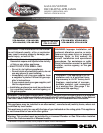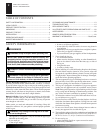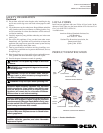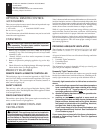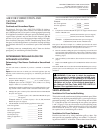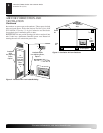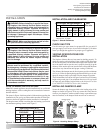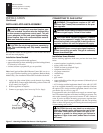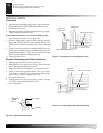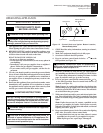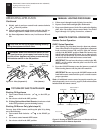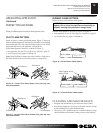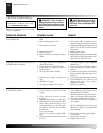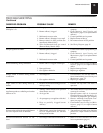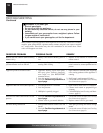
111826-02F
For more information, visit www.desatech.com
4
1. Remove log set as sem bly from carton. Note: Do not pick up
assembly by logs. This could dam age the unit. Always handle
assembly by grate.
2. Remove control cover fl oor media components & remote
control if supplied.
3. Remove all protective packaging ap plied to log set for ship-
ment.
4. Check all items for any shipping dam age. If damaged, prompt ly
inform deal er where you bought appliance.
UNPACKING
CAUTION: Do not remove the data plates from the
grate assembly. The data plates con tain im por tant
warranty and safety in for ma tion.
AIR FOR COMBUSTION AND
VENTILATION
Today’s homes are built more energy ef fi cient than ever. New ma te ri als,
increased in su la tion, and new construction methods help reduce heat
loss in homes. Home own ers weather strip and caulk around windows
and doors to keep the cold air out and the warm air in. During heating
months, home owners want their homes as airtight as pos si ble.
While it is good to make your home energy effi cient, your home
needs to breathe. Fresh air must enter your home. All fuel-burning
appliances need fresh air for proper com bus tion and ven ti la tion.
Exhaust fans, fi replaces, clothes dryers, and fuel burning appliances
draw air from the house to operate. You must provide ad e quate fresh
air for these ap pli anc es. This will insure proper venting of vented
fuel-burning appliances.
WARNING: This appliance shall not be installed in
a confi ned space or unusually tight con struc tion un-
less pro vi sions are pro vid ed for ad e quate com bus tion
and ven ti la tion air. Read the fol low ing in struc tions to
in sure prop er fresh air for this and other fuel-burning
ap pli anc es in your home.
PROVIDING ADEQUATE VENTILATION
The following are excerpts from National Fuel Gas Code, ANSI
Z223.1/NFPA 54, Sec tion 5.3, Air for Combustion and Ven ti -
la tion.
All spaces in homes fall into one of the three following ventilation
classifi cations:
1. Unusually Tight Construction
2. Unconfi ned Space
3. Confi ned Space
The information on pages 4 through 6 will help you classify your
space and provide ad e quate ven ti la tion.
Unusually Tight Construction
The air that leaks around doors and win dows may provide enough
fresh air for combustion and ventilation. However, in buildings of un-
usually tight construction, you must provide additional fresh air.
OPTIONAL REMOTE CONTROL ACCESSORIES
UNPACKING
PRODUCT FEATURES
AIR FOR COMBUSTION AND VENTILATION
OPTIONAL REMOTE CONTROL
ACCESSORIES
PRODUCT FEATURES
REMOTE READY & REMOTE CONTROLLED
This unitized gas log set is tested and approved to ANSI Z21.60a
and CSA 2.26a-2000 as a vented decorative appliance. This log set
has a piezo ignitor . This system requires no matches, batteries or
other source to light log set.
SAFETY DEVICE
This unit has a pilot with an Oxygen Depletion Sensing (ODS)
safety shutoff sys tem. The ODS/pilot shuts off the appliance if there
is not enough fresh air.
PIEZO IGNITION SYSTEM
This unit has a piezo ignitor. This system requires no matches, bat-
teries, or other sourc es to light appliance.
There are two optional remote controls that can be purchased sepa-
rately for Remote-Ready Models:
• wall switch • hand-held ON/OFF remote
See Accessories, page 22.
The wall thermostat or hand-held ther mo stat may not be used with
vented dec o ra tive appliances.
Unusually tight construction is de fi ned as construction
where:
a. walls and ceilings exposed to the outside at mo sphere
have a con tin u ous water vapor retarder with a rating
of one perm (6 x 10
-11
kg per pa-sec-m
2
) or less with
open ings gasketed or sealed and
b. weather stripping has been add ed on openable win-
dows and doors and
c. caulking or sealants are applied to areas such as
joints around window and door frames, be tween sole
plates and fl oors, be tween wall-ceiling joints, be tween
wall panels, at pen e tra tions for plumb ing, electrical,
and gas lines, and at other openings.
If your home meets all of the three criteria above, you
must pro vide ad di tion al fresh air. See Ventilation Air
From Outdoors, page 5.
If your home does not meet all of the three criteria above,
proceed to De ter min ing Fresh-Air Flow For Appliance
Lo ca tion, below.
Providing Adequate Ventilation



